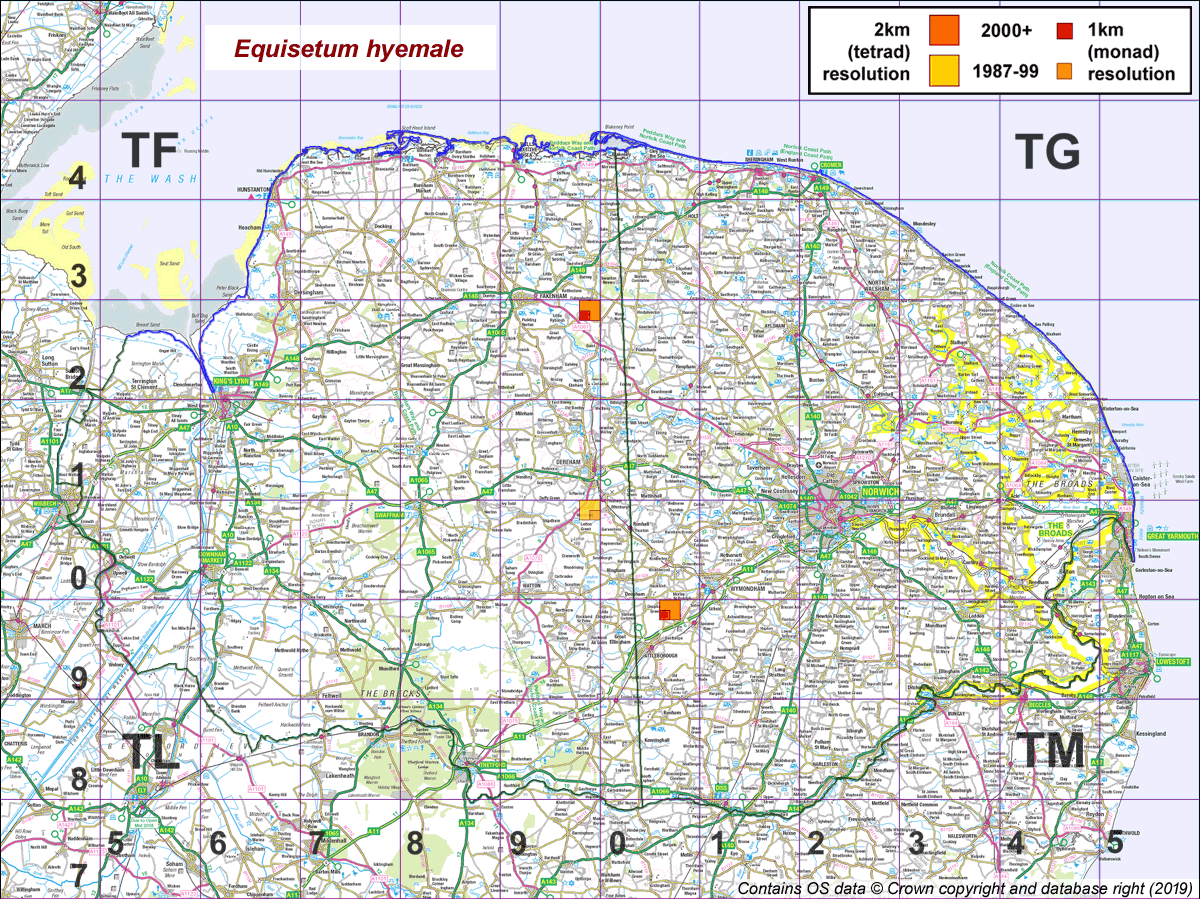Equisetum hyemale L.
| GB Red List | England Red List | GB Scarcity | Norfolk Scarcity |
| Rare |
Native
Rough Horsetail is a slow-growing, evergreen herb forming colonies of shoots from branching rhizomes. It prefers heavy soils derived from sand or clay which are permanently moist and have a high mineral and silica content. It is usually found in shaded open woodland beside streams and rivers, but also grows in base-rich moorland flushes and sand dunes (C. Dixon & T. D. Dines in Preston et al, 2002)
Rough Horsetail has always been rare in the county. Nicholson (1914) decribed it as "very rare, perhaps extinct" and cited four 18th & 19th century records. Petch & Swann (1968) listed it as extinct, but in their supplement (1975) they detail a newly discovered location: "... Mr Richard Harmer sent Dr. Ellis [EAE] a vouching specimen from a hedge on his farm in February 1974. This colony at Stibbard was "abundant for about 300 yards". Since then two more hedgerow and ditch colonies have been found. All colonies are on heavy clay soils. Beckett et al (1999) described Rough Horsetail as introduced, but it was mapped as native in Preston et al (2002).
There is a record in A Flora of King's Lynn (Schumann & Stevenson, 2011) describing Rough Horsetail stems as having made "several determined attempts to escape from their minimalist garden by pushing up through the tarmac of the adjacent pavement". It is grown in gardens and is perhaps a more robust form than that found in the wild and it can spread vigourously.

| Year | GR | Locality | Recorders |
|---|---|---|---|
| 1988 | TF992088 | Shipdham / Whinburgh | DMM |
| [Described in Beckett et al. (1999) as Shipdham but the grid reference is on the Whinburgh side of the parish boundary] | |||
| 2010 | TF987281 | Stibbard | CLR |
| Roadside nature reserve, first recorded 1974 | |||
| 2017 | TM068988 | Morley St Botolph | RWE |
| Roadside nature reserve at base of hedge with ditch behind. TM06809884. Also in 2010 TM067988, RWE et al., in 2008, TM066988 AEH, CDH. Discovered in 1999 by SP. | |||
